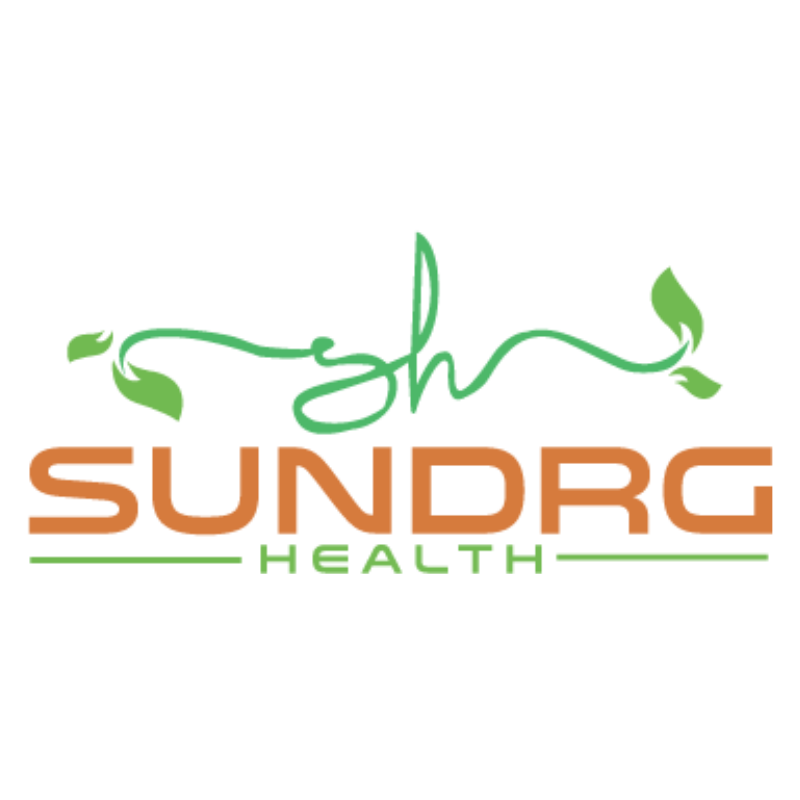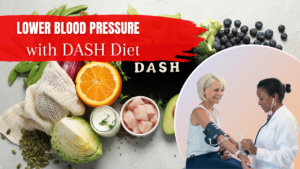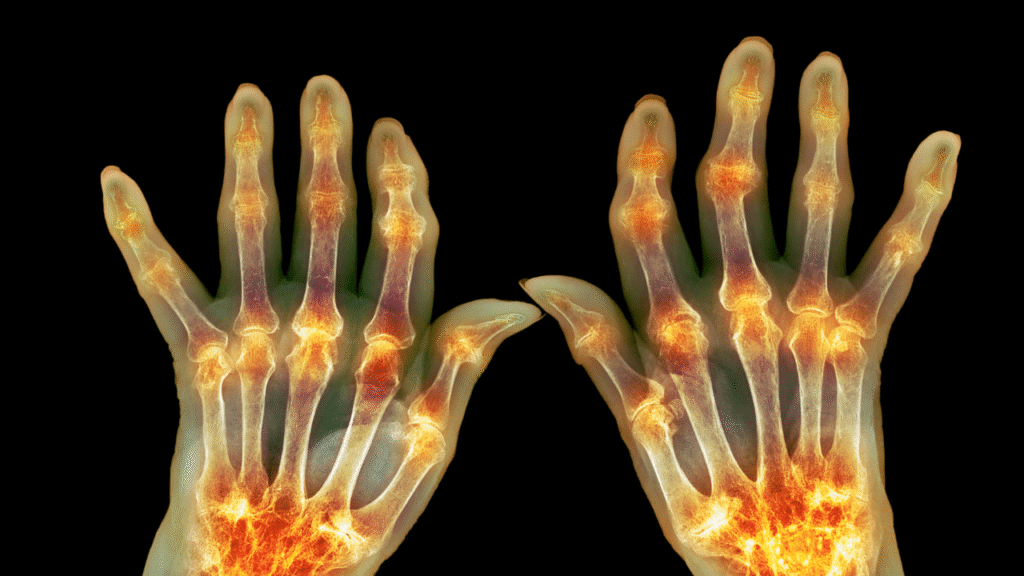Overview of Hypertension
Hypertension, commonly known as high blood pressure, is a medical condition in which the force of blood against the artery walls is consistently too high. This condition is a significant global health concern, affecting over 1.3 billion people worldwide. Hypertension is often referred to as a “silent killer” because it typically presents no symptoms while gradually damaging the cardiovascular system. If left untreated, hypertension can lead to severe health risks, including heart disease, stroke, kidney failure, and other life-threatening conditions.
Introduction to the DASH Diet
The DASH (Dietary Approaches to Stop Hypertension) diet was developed in the 1990s by the National Institutes of Health (NIH) as a dietary strategy to combat high blood pressure. This diet was designed after extensive research identified specific dietary patterns that most effectively lowered blood pressure. The DASH diet emphasizes consuming fruits, vegetables, whole grains, lean proteins, and low-fat dairy while reducing the intake of sodium, red meat, and added sugars. Its primary purpose is to manage and reduce hypertension, promoting heart health and overall well-being through balanced, nutrient-rich meals.
This article explores how the DASH diet effectively lowers blood pressure and promotes cardiovascular health. Examining the diet’s core components, mechanisms of action, and supporting scientific evidence aims to provide a comprehensive understanding of why the DASH diet is a highly recommended approach for those seeking to manage or prevent hypertension.
Core Components of the DASH Diet
1. Emphasis on Fruits and Vegetables
- High Potassium Content and Its Role in Lowering Blood Pressure: Fruits and vegetables are central to the DASH diet due to their high potassium content. Potassium plays a crucial role in managing blood pressure by helping balance sodium’s effects in the body. It aids in relaxing blood vessel walls and promotes sodium excretion through urine, thereby reducing overall blood pressure levels. Foods rich in potassium, such as bananas, oranges, spinach, and sweet potatoes, are staples of the DASH diet.
- The Importance of Antioxidants and Fiber: Besides potassium, fruits and vegetables are packed with antioxidants and dietary fiber, both essential for heart health. Antioxidants help protect the cardiovascular system by neutralizing free radicals that can damage blood vessels and lead to hypertension. Conversely, fiber supports healthy digestion and can help lower cholesterol levels, contributing to heart health. Incorporating a variety of colorful fruits and vegetables ensures a rich intake of these beneficial nutrients.
2. Low-Fat Dairy Products
- Calcium’s Role in Blood Pressure Regulation: Low-fat dairy products are a key component of the DASH diet because they are an excellent source of calcium. This mineral plays a vital role in blood pressure regulation. Adequate calcium intake helps blood vessels tighten and relax properly, which is essential for maintaining healthy blood pressure levels. By including low-fat or fat-free milk, yogurt, and cheese, the DASH diet ensures that individuals receive the calcium they need without the added fats that could negatively impact heart health.
- How Low-Fat Dairy Helps Meet Calcium Needs Without Added Fats: The DASH diet emphasizes low-fat or fat-free dairy options to provide the necessary calcium while minimizing the intake of saturated fats. Saturated fats can contribute to the development of cardiovascular disease by raising LDL (bad) cholesterol levels. By choosing low-fat dairy, individuals can reap the benefits of calcium for blood pressure control without increasing their risk of heart disease.
3. Whole Grains
- Nutritional Benefits, Including Fiber and Magnesium: Whole grains are another essential element of the DASH diet, offering a rich dietary fiber and magnesium source. Fiber aids in maintaining healthy cholesterol levels and supports digestive health, while magnesium is crucial for proper muscle and nerve function, including regulating blood vessel function. Examples of whole grains in the DASH diet include oats, brown rice, whole wheat, barley, and quinoa.
- Impact on Blood Pressure and Heart Health: Consuming whole grains has been shown to impact blood pressure and overall heart health positively. Combining fiber and magnesium in whole grains helps relax blood vessels, reduce arterial stiffness, and lower blood pressure. Additionally, whole grains provide a sustained energy source, helping to manage body weight, which is a critical factor in controlling hypertension.
4. Lean Proteins
- Inclusion of Fish, Poultry, and Plant-Based Proteins: The DASH diet promotes the consumption of lean proteins, including fish, poultry, and plant-based sources like beans, lentils, and tofu. These proteins are low in saturated fats and provide essential nutrients that support heart health. Fish, especially fatty varieties like salmon and mackerel, are rich in omega-3 fatty acids, which have been shown to reduce inflammation and lower blood pressure.
- Benefits of Reducing Red Meat Consumption: Reducing red meat intake is a key aspect of the DASH diet. Red meat is high in saturated fats and cholesterol, both of which can contribute to the development of hypertension and cardiovascular disease. By replacing red meat with lean proteins, the DASH diet helps lower overall cholesterol levels and reduce the risk of heart-related issues.
5. Reduction in Sodium Intake
- The DASH Diet’s Guidelines on Sodium: One of the most critical components of the DASH diet is its focus on reducing sodium intake. The diet recommends limiting sodium consumption to 2,300 milligrams per day or, for those with existing hypertension or who are particularly sensitive to sodium, even further to 1,500 milligrams per day. This reduction is achieved by choosing fresh, whole foods over processed items, often containing high levels of added sodium.
- How Lowering Sodium Intake Directly Impacts Blood Pressure: Sodium has a direct impact on blood pressure by causing the body to retain water, which increases blood volume and, consequently, the pressure on blood vessel walls. By significantly reducing sodium intake, the DASH diet helps decrease this pressure, lowering blood pressure levels. Over time, this sodium reduction can substantially reduce the risk of hypertension and related cardiovascular diseases.
Related: Magnesium: 10 Signs and Symptoms Your Body May Need More – SunDrg Health
Mechanisms by Which the DASH Diet Lowers Blood Pressure
1. Balancing Electrolytes
- The Role of Potassium, Calcium, and Magnesium in Regulating Blood Pressure: Potassium, calcium, and magnesium are essential electrolytes in regulating blood pressure. Potassium helps to relax blood vessel walls, which reduces blood pressure. It also counteracts the effects of sodium by promoting its excretion through urine. Calcium is vital for the proper contraction and relaxation of blood vessels, which helps to maintain stable blood pressure levels. Magnesium contributes to the relaxation of blood vessels and is involved in the regulation of various biochemical reactions that control blood pressure.
- How the DASH Diet Promotes a Healthy Balance of These Electrolytes: The DASH diet is rich in foods naturally high in potassium, calcium, and magnesium, such as fruits, vegetables, low-fat dairy products, and whole grains. By emphasizing these foods, the DASH diet helps maintain a healthy balance of electrolytes, which is critical for blood pressure regulation. This balance aids in reducing blood pressure by improving the overall function of blood vessels and promoting the excretion of excess sodium.
2. Reduction in Sodium
- Impact of Reduced Sodium on Blood Vessel Function and Fluid Balance: Sodium plays a significant role in regulating fluid balance within the body. High sodium intake leads to water retention, which increases blood volume and the pressure exerted on blood vessel walls. This can cause blood vessels to become less flexible, increasing blood pressure. By reducing sodium intake, the DASH diet helps decrease the amount of fluid in the bloodstream, lowering blood pressure and the strain on blood vessels.
- How the DASH Diet’s Low Sodium Content Helps Reduce Hypertension: The DASH diet’s focus on limiting sodium intake is a key mechanism in lowering blood pressure. The DASH diet reduces overall sodium consumption by choosing fresh, whole foods and minimizing processed foods, often high in sodium. This reduction helps to prevent the buildup of excess fluid in the body, leading to lower blood pressure and a reduced risk of hypertension.
3. Weight Management
- The DASH Diet’s Role in Promoting Healthy Weight Loss or Maintenance: The DASH diet benefits blood pressure management and promotes healthy weight loss or maintenance. The diet emphasizes nutrient-dense, low-calorie foods such as fruits, vegetables, whole grains, and lean proteins, which support healthy weight management. Maintaining a healthy weight is essential for controlling blood pressure, as excess body weight can increase the risk of developing hypertension.
- Connection Between Weight Reduction and Lower Blood Pressure: There is a strong connection between weight reduction and lower blood pressure. Excess body weight increases the workload on the heart and contributes to higher blood pressure. By following the DASH diet, individuals are more likely to achieve and maintain a healthy weight, which can lead to significant reductions in blood pressure. Even modest weight loss can positively impact blood pressure levels, further reducing the risk of hypertension.
4. Improved Blood Vessel Function
- The Diet’s Impact on Endothelial Function and Arterial Stiffness: The endothelium is the inner lining of blood vessels, and its proper function is critical for maintaining healthy blood pressure. The DASH diet, rich in antioxidants, healthy fats, and essential nutrients, supports endothelial function by reducing inflammation and oxidative stress. This helps blood vessels remain flexible and responsive to changes in blood flow. Additionally, the diet’s emphasis on whole grains, fruits, and vegetables reduces arterial stiffness, a common issue in individuals with hypertension.
- Long-Term Benefits for Cardiovascular Health: The DASH diet offers long-term benefits for cardiovascular health by improving endothelial function and reducing arterial stiffness. Over time, better blood vessel function leads to sustained reductions in blood pressure and a lower risk of developing cardiovascular diseases such as heart attack and stroke. Combining nutrient-rich foods and reduced sodium intake in the DASH diet lowers blood pressure. It promotes overall heart health and is a highly effective dietary approach for hypertension management.
Scientific Evidence Supporting the DASH Diet
1. Key Studies and Clinical Trials
- Overview of Significant Studies Demonstrating the DASH Diet’s Effectiveness: The effectiveness of the DASH diet in lowering blood pressure has been extensively studied in numerous clinical trials, with some of the most significant being the original DASH trials funded by the National Institutes of Health (NIH). The first DASH study, published in 1997, involved 459 adults with varying blood pressure levels and compared the effects of three different diets: a typical American diet, a diet rich in fruits and vegetables, and the DASH diet. The DASH diet, rich in fruits, vegetables, low-fat dairy, and low in saturated fat, showed the most substantial reduction in blood pressure, particularly among participants with hypertension.
- Specific Outcomes Related to Blood Pressure Reduction: The original DASH study demonstrated that participants following the DASH diet experienced a significant reduction in both systolic and diastolic blood pressure. On average, systolic blood pressure decreased by 5.5 mm Hg and diastolic pressure by 3.0 mm Hg. The reductions were even more pronounced in individuals with hypertension, with systolic pressure dropping by 11.4 mm Hg and diastolic pressure by 5.5 mm Hg. These results were achieved without any changes in sodium intake, highlighting the diet’s inherent benefits. Subsequent studies, such as the DASH-Sodium trial, further confirmed these findings by demonstrating that reducing sodium intake while following the DASH diet led to even greater reductions in blood pressure.
2. Meta-Analyses and Systematic Reviews
- Summary of Comprehensive Research on the DASH Diet: Numerous meta-analyses and systematic reviews have been conducted to evaluate the overall impact of the DASH diet on blood pressure and cardiovascular health. These reviews compile data from multiple studies, providing a broader understanding of the diet’s effectiveness. A notable meta-analysis published in hypertension in 2016 analyzed data from 28 randomized controlled trials involving over 4,500 participants. The analysis concluded that the DASH diet consistently led to significant reductions in systolic and diastolic blood pressure across different populations, including those with and without hypertension.
- Consensus Among Health Professionals and Endorsement by Major Health Organizations: The robust body of evidence supporting the DASH diet has led to widespread endorsement by health professionals and major health organizations. The American Heart Association (AHA), the American College of Cardiology (ACC), and the National Heart, Lung, and Blood Institute (NHLBI) all recommend the DASH diet as a first-line approach for the prevention and management of hypertension. These endorsements are based on the consensus that the DASH diet not only effectively lowers blood pressure but also contributes to overall cardiovascular health, making it a key dietary strategy in reducing the risk of heart disease and stroke. The World Health Organization (WHO) and other international health bodies have recognized the DASH diet as a worldwide model for healthy eating patterns.

Practical Tips for Adopting the DASH Diet
1. Meal Planning and Preparation
- Tips for Incorporating DASH Diet Components into Daily Meals:
- Start Your Day with Whole Grains: For breakfast, incorporate whole grains like oatmeal, whole wheat toast, or whole grain cereal. These options are rich in fiber and help keep you full longer.
- Prioritize Fruits and Vegetables: Aim to fill half your plate with fruits and vegetables at every meal. Add a side salad, steamed vegetables, or fresh fruit to your meals.
- Include Lean Proteins: Incorporate lean proteins such as grilled chicken, fish, beans, or tofu. These provide essential nutrients without excess saturated fat.
- Use Low-Fat Dairy: Opt for low-fat or fat-free dairy products like milk, yogurt, or cheese. These options help you meet calcium needs without added fats.
- Snack Smart: Choose heart-healthy snacks such as unsalted nuts, fresh fruit, or raw vegetables with hummus.
- Suggestions for Reducing Sodium Intake at Home:
- Cook from Scratch: Prepare meals at home using fresh ingredients to control the amount of salt added to your food.
- Use Herbs and Spices: Replace salt with herbs, spices, lemon juice, or vinegar to enhance the flavor of your dishes without adding sodium.
- Read Labels Carefully: When buying packaged foods, choose products labeled “low-sodium” or “no salt added.” Aim for foods with less than 140 mg of sodium per serving.
- Rinse Canned Foods: Before cooking, rinse canned vegetables, beans, or fish under cold water to remove excess sodium.
- Limit Processed Foods: Reduce your consumption of processed foods often high in sodium. Opt for fresh or frozen vegetables, lean meats, and whole grains instead.
2. Eating Out on the DASH Diet
- How to Choose DASH-Friendly Options at Restaurants:
- Select Dishes Rich in Vegetables: Look for menu items that emphasize vegetables, such as salads, vegetable stir-fries, or grilled vegetable sides.
- Opt for Grilled or Baked Proteins: Choose grilled or baked lean proteins like chicken, fish, or tofu rather than fried or breaded options.
- Request Dressings and Sauces on the Side: Ask for salad dressings, sauces, and gravies on the side to control how much you use, helping to reduce sodium intake.
- Choose Whole Grains: If available, select whole grain options such as brown rice, whole wheat pasta, or whole grain bread.
- Be Mindful of Portion Sizes: Restaurants often serve large portions. Consider sharing a dish, asking for a half-portion, or taking half your meal home.
- Strategies for Maintaining the Diet While Dining Out:
- Research Menus in Advance: Look up the restaurant’s menu online before you go so you can plan your meal and make DASH-friendly choices.
- Speak Up: Don’t hesitate to ask the server how dishes are prepared or request modifications to make a dish more DASH-friendly, such as reducing the salt or opting for steamed vegetables instead of fries.
- Limit High-Sodium Items: Be cautious with soups, cured meats, cheeses, and bread, often high in sodium. Consider these items as occasional treats rather than regular choices.
- Stay Hydrated: Drink plenty of water during your meal. This supports overall health and helps reduce cravings for salty foods.
- Focus on Balance: If you indulge in a less DASH-friendly dish, balance it with healthier options throughout the day to maintain your overall dietary goals.
3. Addressing Common Challenges
- Budget-Friendly Options for Following the DASH Diet:
- Buy in Bulk: Purchase whole grains, dried beans, and frozen vegetables in bulk to save money and reduce food waste.
- Seasonal and Local Produce: Buy fruits and vegetables that are in season and locally sourced, as they tend to be more affordable and fresher.
- Plan and Prep Meals: Plan your meals for the week and prepare larger portions that can be used for multiple meals. This can help reduce costs and ensure you have DASH-friendly options available.
- Opt for Store Brands: Store-brand products are often cheaper than name brands, especially for staples like oats, rice, and canned goods.
- Cook with Less Meat: Incorporate more plant-based meals using beans, lentils, and legumes, which are usually less expensive than meat.
- Adapting the Diet to Different Dietary Needs and Preferences:
- For Vegetarians and Vegans: Focus on plant-based proteins such as beans, lentils, tofu, and nuts. Use fortified plant-based milk alternatives to meet calcium needs.
- For Gluten-Free Diets: Choose gluten-free whole grains like quinoa, brown rice, and gluten-free oats. Ensure that processed gluten-free foods are also low in sodium.
- For Lactose Intolerance: Opt for lactose-free dairy products or fortified plant-based alternatives such as almond milk, soy milk, or lactose-free yogurt.
- For Picky Eaters or Family Meals: Gradually introduce DASH-friendly ingredients by incorporating them into familiar dishes, such as adding more vegetables to pasta sauce or using whole grain bread for sandwiches.
- For Busy Lifestyles: Prepare meals in advance and freeze portions for quick, healthy meals on the go. Utilize slow cookers or pressure cookers to save time while preparing DASH-friendly dishes.
Conclusion
The DASH diet, rich in fruits, vegetables, whole grains, lean proteins, and low-fat dairy, is specifically designed to lower blood pressure through a balanced intake of essential nutrients like potassium, calcium, and magnesium. By emphasizing the reduction of sodium intake and incorporating heart-healthy foods, the DASH diet helps regulate blood pressure, promotes weight management, and improves overall cardiovascular health.
The long-term benefits of the DASH diet extend beyond just lowering blood pressure. By adopting this diet, individuals can significantly reduce their risk of developing hypertension, heart disease, stroke, and other chronic conditions. The diet’s focus on whole, nutrient-dense foods supports heart health and overall well-being, making it a sustainable approach to a healthier lifestyle.
Given the substantial evidence supporting the DASH diet’s effectiveness, it is highly encouraged for individuals, particularly those at risk of or currently managing hypertension, to adopt this dietary approach. By making gradual, consistent changes to your eating habits and prioritizing the principles of the DASH diet, you can achieve better blood pressure control and enjoy improved long-term health.
Reference
Blood pressure lowering – The Lancet
Blood Pressure–Lowering Strategy (ahajournals.org)
Topics in Clinical Nutrition (lww.com)
The Science Behind the DASH Eating Plan | NHLBI, NIH
(PDF) DASH Diet: (researchgate.net)





